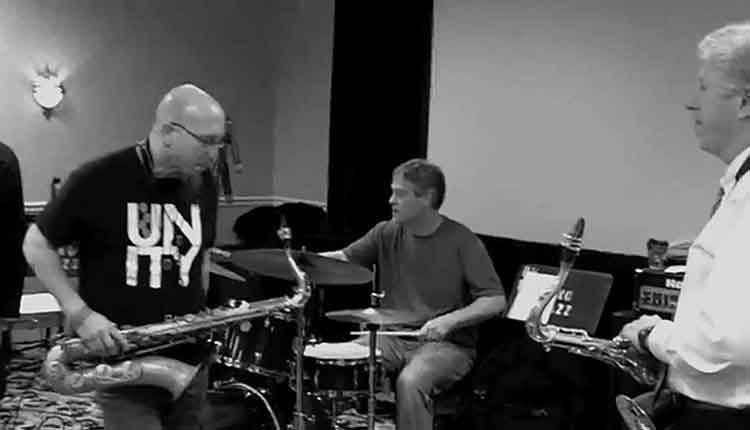Three Significant Dilemmas for Music – Jazz Education!
Unfortunately today, many music educators are not necessarily trained or familiar with how to utilize the plethora of the incredible teaching materials since the 1960’s when college jazz degrees first became prominent and since the 1970’s when jazz education instructional materials became widely published. There are several explanations that can outline this lack cohesiveness in effectively utilizing jazz instructional materials.
First, undergraduate college music ed majors are not required to take jazz pedagogy courses as part of their bachelor’s degree requirements because required college courseware is so highly structured between the required academic courseware and general education courses for teacher certification in addition to the amount of required music courses in history/literature, theory, performance, music ed, etc. that can be accumulated towards a bachelor’s degree, which also results in a severe restriction of elective music courses that can be taken all within a 120 to 128 semester credit requirements for the bachelor’s degree with electives at a bare minimum.
Second, most master’s degrees in music education also do not necessarily cover jazz pedagogy techniques in the depth that music educators need to be able to learn to use in their job requirements especially in the areas of improvisation, jazz style interpretations, arranging/composing and other jazz performance-oriented areas including music technology which are pedagogically unique when considering the classical orientation of the undergraduate and graduate level music ed degree curriculum.
Third, most music teachers in the profession today have not been pedagogically taught how to effectively incorporate the appropriate teaching materials best suited for classroom use which is even apparent with the lack of summer in-service college workshops available as well as sparse editorial coverage in professional music journals.
Step-by-Step Instructional SolutionsIn Developing a Successful School Jazz Program
Why has there been a long-standing dilemma in jazz education in dealing with successfully directing a jazz band program? Is it because jazz and classical are rather different and unique from each other? Working with rhythm sections is certainly not the norm in classical music. Emphasize on improvisation is certainly not mainstream in classical music. Jazz is a product of twentieth-century sociological and technological accelerations and changes. In many instances, it is a performer’s art and is vested in contemporary popular music styles rather than the replication of the composer’s product which implies that its interpretations are in the traditions classical genres that are centuries old stemming from European music which are mainstream in collegiate music education courses. Lastly, there are specialized instructional materials for jazz that are definitely outside of the classical music repertory with a host of many unique musical styles of swing, rock, Latin, ballad and others. Examples include play-along recordings, rhythm pattern books, chordal/scalar books, ear training theory/arranging books, and idiomatic applied techniques for woodwinds, brass, all rhythm instruments and strings.
Jazz education is a logical vehicle for teaching comprehensive musicianship concepts-such as ear training, composing, improvising and style analysis-that are essential ingredients in the development of students’ musicality and unfortunately many teachers today may not be comfortable in teaching jazz even if they were using the best available instructional materials.
In an attempt to resolve this instructional void, welcome to a brand-new column for www.banddirector.com as an on-going series of installments as a one-stop resource to help every band director to be better prepared for the first day of rehearsal, whether he or she has years of experience or is a novice.to both cover a variety of jazz teaching materials appropriate for band, strings, choral and/or general music and with pedagogical insight and instructional tips of how to more effectively use them. Subsequent installments will cover the following topics and more featuring just about anything and everything a middle and high school band director needs to be utilizing in his/her jazz instruction.
- Joining and Creating the Jazz Bandwagon
- The Large Jazz Ensemble: The Backbone of Your Program
- Applied Jazz Techniques: Developing Your Jazz Sections
- Putting It Together
- Obtaining an Improvisation Overview
- Gaining Listening Skills
- Improvisation: The Primary Too in Jazz Creativity
- Using Materials to Enhance Instruction
- The Role of Jazz or Rock Combos
- Getting Started
- Materials for the Combo
- Applied Techniques for the Jazz or Rock Combo
- Selecting Jazz Equipment
- Teaching Improvisation in the Combo Setting
- How To Successfully Put Together a Performance


